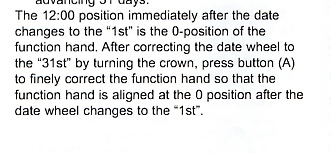February 21, 2005
Smaller than a googol
Enter a mathematical expression into Google and it will return the results. E.g., if you enter “1+2” (no quotes), it will tell you the answer is 3. Enter “half a cup in teaspoons” and it tells you that that’s 24 US teaspoons.
So, the lunatic journal, WordWays (I’m a long-time subscriber and love it) writes briefly about Eric Iverson’s attempt to see “which alphabetic phrase without any repreating letters generated the largest and smallest number.” Why? For that we’d need a psychiatrist and a pick axe. But who cares? Eric has found that the smallest is
and the largest is
I am so not tempted to outdo Eric.
WordWays — “The Journal of Recreational Linguistics” — continues to get harder to read thanks to computers. A typical article treats words as collections of letters and tries to find ones that meet some odd constraint. Typical articles used to be about word pyramids and hyphenated words whose letters immediately before and after the hyphen cover every possible pairing. But now that word lists are computerized, the best of the WordWaysians have to come up with challenges that would not only stump a human but come close to stumping computers. I often can’t figure out what the hell the challenge is. For example, Simon Norton has an article wondering if all words can be expressed as sumagrams. Here’s the second paragraph:
This is what is called a free abelian group, where the second word derives from the name opf the Norwegian mathematician Abel. The elements of this group are sequences of (upper case) letters and antiletters…
Some I can follow, though. Eric Iverson, for example, publishes a list of words made only with letters with diagonals in them, from akavit to zanza. He finishes with a list of the longest words without any diagonal letters, starting with bioelectricities. And Darryl Francis lists all 300 tube stations in London and tries to find something interesting about their names. For example, did you know that Bond Street transadds to deobstruent and sober-tinted? I didn’t!
In the current issue, there’s also an article by Will Nediger speculating that Douglas Adams took his fascination with the number 42 from Lewis Carroll. And my son and I particularly enjoyed Fender Tucker’s list of 11 heterograms placed in perfectly ambiguous sentences, such as:
After breaking into the Sherriff of Nottingham’s armory, the flamboyant actor/thief Robin Hood took a bow.
Unfortunately, WordWays has a minimal Web presence — some samples and an opportunity to subscribe. It’s just about tailor-made for living on line. [Technorati tag: wordways ]









